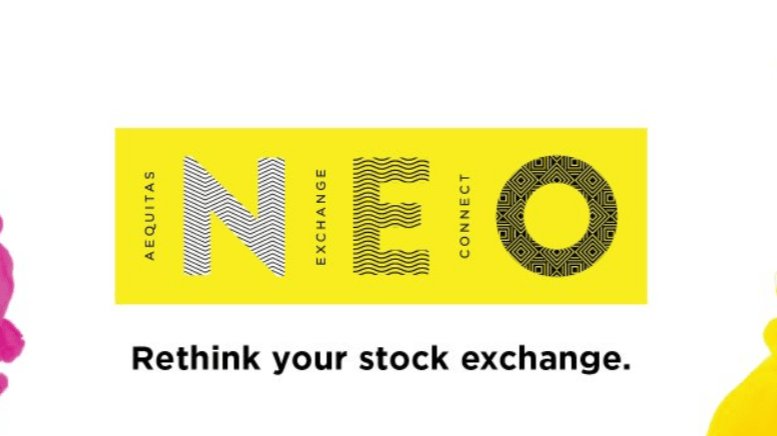
Owned by Aequitas Innovations, the NEO Exchange appeared in 2015; it now represents almost 10% of the volume traded for all Canadian-listed securities.
With its focus on putting capital-raising companies, investors, and dealers first, many are asking the same question: how do I trade stocks on NEO? Luckily, the process is straightforward. For instance, securities don’t have to change their existing symbols. That’s just the beginning, though.
Trading on NEO: What to Know
Of the many things that NEO tries to achieve—competition and innovation are essential to the exchange—the Canadian exchange also works to ensure liquidity by leveling the playing field for long-term investors. It does so in three ways.
First, however, we should mention that the NEO Exchange looks at traders in the markets today in two ways. It’s important to know this if you’re thinking about trading on NEO because the exchange will classify you based on your trading profile.
The Different Types of Traders
1. NEO Traders
According to the exchange, NEO traders are those who work on behalf of long-term investors. For instance, they might be buying or selling different securities based on their anticipated value. Classification for NEO Traders includes both institutional and retail client flow.
2. LST Traders
Latency sensitive traders are high-frequency traders who trade for their own accounts. They do so by using automated, co-located trading strategies and state-of-the-art technology. With LST traders, orders do not center around long-term investment strategies.
Leveling the Trading Playing Field
After stock exchanges began participating in predatory trading practices, the NEO Exchange wanted to take the financial world back to its roots: by helping capital-raising companies and investors earn more money by ensuring fairness and liquidity. One way of doing this is by offering long-term investors three distinct venues.
1. NEO-N
The NEO-N venue encourages liquidity for long-term investors in several ways. First, this venue imposes a technical “speed bump,” which is a randomized 3–9 millisecond delay that applies to orders from high-frequency traders who are looking to take liquidity out of the market.
Put simply: predatory high-frequency traders have a technological speed advantage that allows them to race ahead of traders’ orders on the markets. They then buy up the shares before other investors can, and then sell them back to investors at a higher cost. NEO works to avoid this by offering the randomized speed bump.
NEO-N also gives priority to larger long-term investor trades. It does so by using a size-time order matching priority. Last but not least, for liquidity providers looking to post sizeable orders, the NEO-N venue displays volume aggregated by price, which creates additional pre-trade anonymity for these providers.
Make note that the fee model in NEO-N is a take-make fee model. This model means that the passive side of the order pays a fee, while the active orders get a rebate.
2. NEO-L
The NEO-L gives NEO Trader orders priority over high-frequency traders. It does so no matter which orders hit the market first.
Unlike trading in NEO-N, this venue follows a make-take fee model. What this means is that passive orders get a rebate, while active orders pay a fee, with the exception of during the opening call.
3. NEO-D
The NEO-D venue is an option for various types of traders, even though it still gives long-term investors an improved trading experience. It does so by giving NEO Trader orders priority over high-frequency traders and including NEO-D market data in the NITCH feed; this does not cost extra. The NEO-D venue also allows participants to submit active orders. Orders from different accounts may also interact with each other, subject to the Counterparty election that is specified on passive orders.
The fee model in this marketplace follows a variation of the take-make fee model.
More details on fees can be found here.
Membership Fees
When discussing NEO, it’s important to discuss how all members must pay membership fees. When applying, individuals can choose from two options, but once the application process is finalized, the NEO Member is not eligible to switch between fee options for at least two years.
The first option is $1,000 a month, where each month Member pays the monthly membership, in addition to trading fees from that month. The second option has a $2,000 monthly membership fee. In this option, the member pays either the monthly minimum fee ($2,000) or only the total trading fees if they surpass $2,000.
Benefits of Trading on the NEO Exchange
Trading on the NEO Exchange provides companies, dealers, and investors a chance to gain reliable liquidity. But trading on the Canadian marketplace has other positive outcomes too. For starters, there has been a reduction in time to trade. Quote fading is also practically non-existent. Moreover, unnecessary intermediation has been reduced, and that means there is a higher percentage of trades occurring between long-term investors.
Trading NEO Stocks Through Questrade
As described above, there are several benefits of the NEO Exchange, which is why in five years, the marketplace has accumulated around 70 ETF listings in addition to Closed Ends Funds and corporate listings. Cannabis stocks have become particularly popular on the exchange, with the likes of Halo Labs, Inc. (NEO: HALO) (OTCQX:AGEEF), Jushi Holdings, Inc. (NEO: JUSH-B), and Columbia Care, Inc. (NEO: CCHW) (OTCQX:CCHWF) listed. The latter was the first billion-dollar listing on the NEO Exchange, obtained in 2019.
As the exchange rises in popularity—it is now the third most active marketplace in Canada by volume traded—many are searching for outlets to trade NEO stocks. That’s where Questrade comes into play.
Questrade is a digital, low-cost online brokerage that aims to give Canadian investors more affordable ways to earn money. Questrade is fast growing: 50 thousand new accounts open annually, and in 2019, MoneySense ranked it as the best online broker.
Visible markets on Questrade include the NEO Exchange, in addition to Alpha and Nasdaq CX2. When individuals place orders through Questrade, the orders route to the above marketplaces through the SOR. Individuals can trade NEO stocks on Questrade, and when individuals place orders, they can use the trading platform to add further instructions to the order, such as setting a specific duration.
Start trading NEO stocks with Questrade now.
Takeaway
Whether it’s exploring how to trade NEO stocks on Questrade or simply considering listing securities on the NEO Exchange, it’s important to remember what started the marketplace’s journey in the first place: to help the finance world get back to its roots.
Learn more about the NEO Exchange.
Disclosure: Some links within this article are affiliate links. There is no additional cost to you but StreetSignals will earn a commission if you click our link and make a purchase.
Featured image: Twitter







